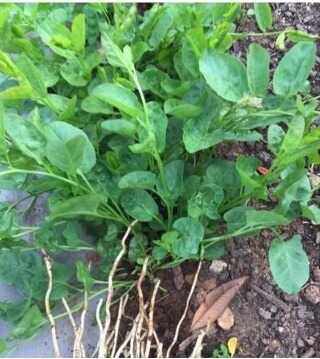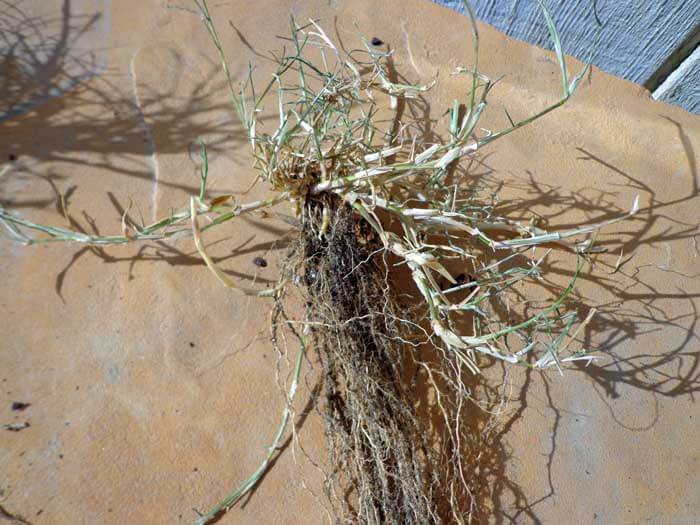
The empire of plants is expansionist and certainly colonial. Immigrant plants are designed by nature to be incredibly self-sustaining through droughts, floods, and wildfires in their place of nativity, and beyond. They must be able to survive Earth-shattering asteroids and volcanoes without becoming extinct. The most competitive immigrants are from droughty climates where it takes hardcore adaptability to survive. Put them in more genteel circumstances, and they not only hang around but start an aggressive expansion into new territory.
These invasives freak out ecologists and botanists who like their plants segregated into long-established, ecologically harmonious North American native plant communities. But, the landscape has changed. The nature of colonization is more like the Oklahoma Land Rush, with expansionist plants trying to find a place to put down roots, often with displacing effects.
Some Common Invasive Western Weeds

For example, Eurasian yellow star thistle (Centaurea solstitialis), which was introduced in the 1800s via contaminated imported seed, can rapidly displace acres of our favorite native wildflowers in just a couple of years. It is also unpalatable to livestock and can damage the eyes of grazers, making it a nightmare for ranchers. For gardeners, this weed is no less unpleasant.
In the forest and chaparral arises Scotch broom (Cytisus scoparius), originally introduced in the west in the 1800s as packing material for the Irish whiskey trade. Broom is still present in the goldfields, everywhere whiskey crates were opened in the western mining camps. When it pops up in the garden, you have to learn how to tackle it fast before it takes hold.
Spanish sheep herds sowed manure enriched with invasive seed all over early California, introducing familiar pernicious species of the old world such as teasel (Dipsacus fullonum, US introduction in 1800s) and field bindweed (Convolvulusarvensis, US introduction in 1800s) as well livestock-unfriendly grasses such as medusahead (Taeniatherum caput-medusae, US introduction in 1887) and Bermuda grass (Cynodon dactylon). The exotic weeds and grasses proved so much more adaptable than the nutritious local native grasses that they were soon the dominant species. They are also a pain in the garden.
When unwanted plants become expansionist, only the strongest survive, and they play to mine the scant moisture underground with deep, aggressive roots. They also bring down the utility and value of farmland, both for livestock and crops, natural lands, and they can take over gardens in a blink of an eye.
Invasive Plant Designation

The designation of plants as invasive is often misunderstood. It’s really a local issue relative to the soil and climate around your land and home. In arid-zone southern California, for example, artichokes are invasive. Decades ago edible artichokes escaped the fields and naturalized on the hills along the coast. Due to frost tenderness of this perennial, the invasiveness is limited to the coastal foothills, while it burns back or dies inland when exposed to frost. Therefore concern for its invasiveness is only in a small coastal strip, not all of California unless future climate change forces it to die out or expand and flourish.
This is why big national invasive plant lists aren’t always accurate for you locally. Learn more about the high-risk plant species by region via the USDA National Invasive Species Information Center, Federal Invasive Plant Program, and also refer to local invasive plant lists, such as the California Cal-IPC Inventory. You can also view USDA state maps of invasive plants that show the prevalence of invasives county by county. Here are guidelines for proper management and ultimate removal of select western invasive species, based on reproductive potential.
Western Invasive Plant Management

Each invasive is managed differently. For example, Scotch broom spreads by producing large quantities of seed that germinates and establishes quickly. Just removing adults doesn’t fix the problem because there’s so much dormant seed in the ground just ready to sprout. A no-till situation and thick mulch application can keep seedlings in check.
In contrast, Bermuda grass spreads by the most aggressive root system you’ll ever see, and removal it tough. Typically sprouts emerge from tiny root pieces to start whole new plants, no matter how carefully dug out. Covering invaded areas with a black plastic cover for a month or two is one way to eradicate any leftover pieces. For the further management of many western invasive plant species, UC Davis has an excellent Invasive Plants IPM website.
We are learning that certain communities are best left as-is in perpetuity, but when invasive, expansionist plants decide that they have a right to displace native plant communities by force, it becomes an invasion. Sadly, many areas are so infested with these pernicious species that takes a war to root them out, and even then there will be casualties on both sides.
Before you dream up next year’s changes to your garden, use these dark winter days to study invasive plant information online for your immediate area. Get to know these plants, so you can recognize them in the wild, in your garden, and in the garden center and root them out as you see them.

